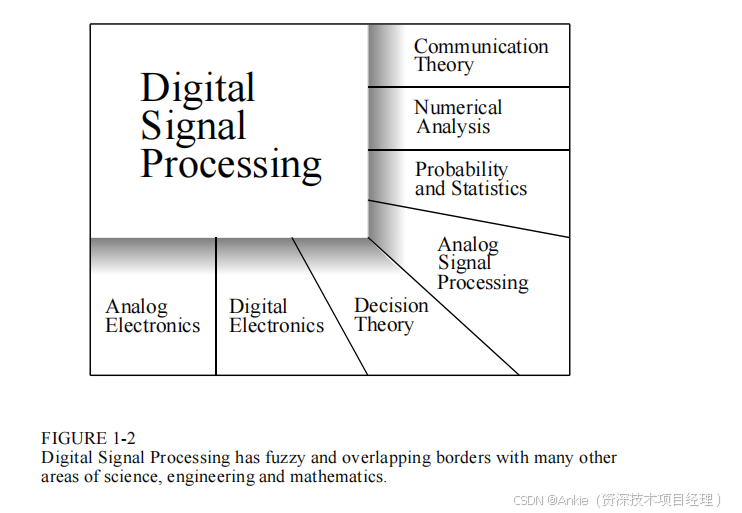the scientist and engineer‘s guide to DSP:1 The Breadth and Depth of DSP 引言
the scientist and engineer's guide to digital signal processing by steven smith
数字信号处理是二十一世纪塑造科学与工程的最强大技术之一。它在多个领域已经引发了革命性变革,包括:
- 通信
- 医学影像
- 雷达与声呐
- 高保真音乐重放
- 石油勘探等
每个领域都发展出深度集成的DSP技术体系,包含特有的算法、数学理论和专业技巧。
与其他计算机科学领域相比,数字信号处理的独特之处在于其处理的数据类型:信号。这些信号大多源自现实世界的感官数据,如地震振动波、视觉图像、声波等。DSP正是用于操作这些数字化信号的数学方法、算法和技术体系,其应用目标涵盖:
- 视觉图像增强
- 语音识别与生成
- 数据压缩存储与传输
- 等众多领域
假设我们通过模数转换器将现实世界数据接入计算机,
DSP要解答的核心问题是:接下来该如何处理这些数据?
Digital Signal Processing is one of the most powerful technologies that will shape science and
engineering in the twenty-first century. Revolutionary changes have already been made in a broad range of fields:
communications,
medical imaging,
radar & sonar,
high fidelity music reproduction,
and oil prospecting, to name just a few.
Each of these areas has developed a deep DSP technology, with its own algorithms, mathematics, and specialized techniques.
Digital Signal Processing is distinguished from other areas in computer science
by the unique type of data it uses: signals. In most cases, these signals
originate as sensory data from the real world: seismic vibrations, visual images,
sound waves, etc. DSP is the mathematics, the algorithms, and the techniques
used to manipulate these signals after they have been converted into a digital
form. This includes a wide variety of goals, such as: enhancement of visual
images, recognition and generation of speech, compression of data for storage
and transmission, etc. Suppose we attach an analog-to-digital converter to a
computer and use it to acquire a chunk of real world data. DSP answers the
question: What next?

A basic premise of this book is that most practical DSP techniques can be
learned and used without the traditional barriers of detailed mathematics and
theory. The Scientist and Engineer’s Guide to Digital Signal Processing is
written for those who want to use DSP as a tool, not a new career.

